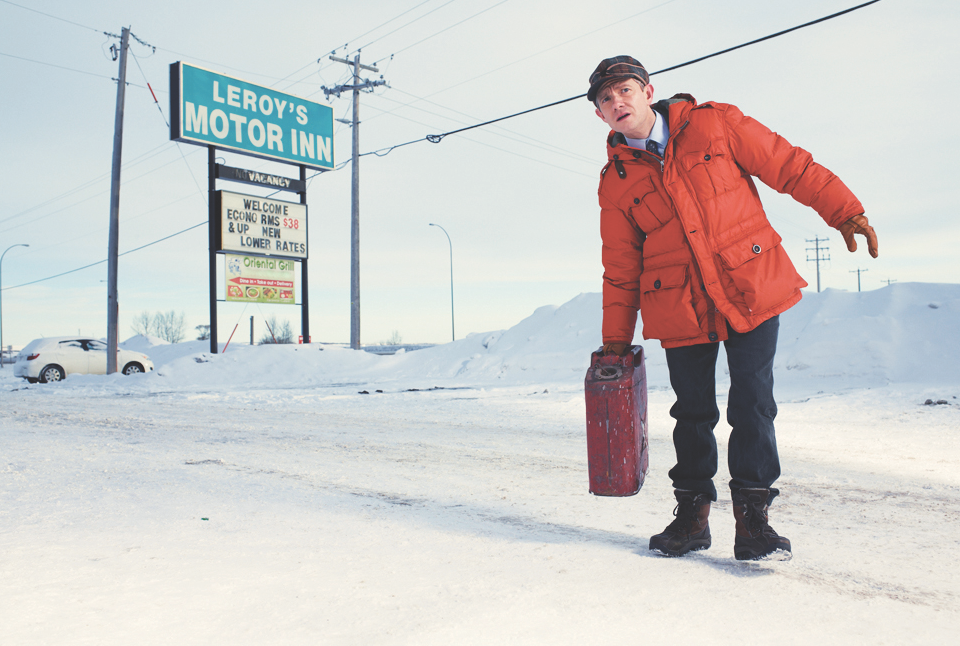
The season three premiere of FX’s anthology series, “Fargo,” should be easier to criticize than its earlier ones. After all, it essentially follows the same formula as the previous stories of the first two seasons: a situation involving petty crime and murder that clashes with the lives of decent people who are simply trying to get by with their daily lives.
The first episode covers much of the same territory and tropes that have come to define the series, no matter what new story is presented each year. It’s not hard to predict when every premiere opens with a murder that sets up the rest of the season’s conflicts, building up to a more brutal and chaotic climax with the law in later episodes. Is anything fresh being done? Not necessarily. And yet the show keeps finding new ways to draw the viewer into its twisted world of violence and dark comedy. Even if it’s already been seen before, this familiar story feels just as captivating as the first time it was told.
The primary plot begins with the conflict between twin brothers, Ray and Emmit Stussy (both played by Ewan McGregor), whose relationship has strained over their father’s inheritance benefiting one over the other. Ray is a rugged parole officer who tires of spending his days around druggies and urine samples. Emmit is much more rich and successful, though not as self-made as one particular scene in the first episode may suggest. Out of petty jealousy, Ray sets up a robbery of his brother’s mansion that ends up going horribly wrong.
The idea of casting the same actor as twins has been done before and could certainly come off as gimmicky. McGregor’s performance and mastered Midwestern accent, however, are both impressive enough to carry the weight and distinguishes the brothers beyond the excellent makeup.
Although McGregor takes up much of the spotlight with his stunt casting, Carrie Coon is just as great as Gloria Burgle, the chief of police who puts her son before herself in any dangerous situation. Her saintly manner is reminiscent of past police characters in the show’s history, such as Deputy Molly Solverson and State Trooper Lou Solverson. Mary Elizabeth Winstead is also a delight as Nikki Swango, who happens to be Ray’s parolee, girlfriend and accomplice (all in that order).
After a cold open in 1988 East Berlin, that’s likely only loosely related to the main story, one can’t help but feel a sense of excitement after hearing the eerily familiar string-driven theme song at the beginning of the episode. It’s easy to quickly assume that we are only going to get more of the same imagery after seeing a row of leafless trees in the backdrop of snow.
It never gets tiring, however, because of the show’s keen eye for gorgeous composition and cinematography. It is a triumph that the series can find new ways to capture the desolate feel of the rural upper Midwest in the middle of winter. So much of the show’s entertainment, and even its humor, stems from how stylized it is. The look of the show has always been a strength for “Fargo.” This aspect is highly unlikely to start faltering three seasons in.
Even if many of the formulaic elements in the show’s season three premiere have been seen in its previous two seasons, perhaps such similar tropes and caricatures are deliberately included in every new season. They help reinforce the show’s running themes of trying to live by doing your own good by your own set of morals, no matter what darkness and horrific actions exist in society. This is always seen in the characters who have a more grounded nature to them, and they often end up succeeding over the criminals in the end.
Knowing how much the show has succeeded in breaking conventions in the past (especially with season two being such a stylistic departure from season one), the premiere probably doesn’t even hint at the new directions this coming season will take. If viewers have been given little reason to leave the Midwest turmoil of this show in the past, it’s doubtful to happen now.
